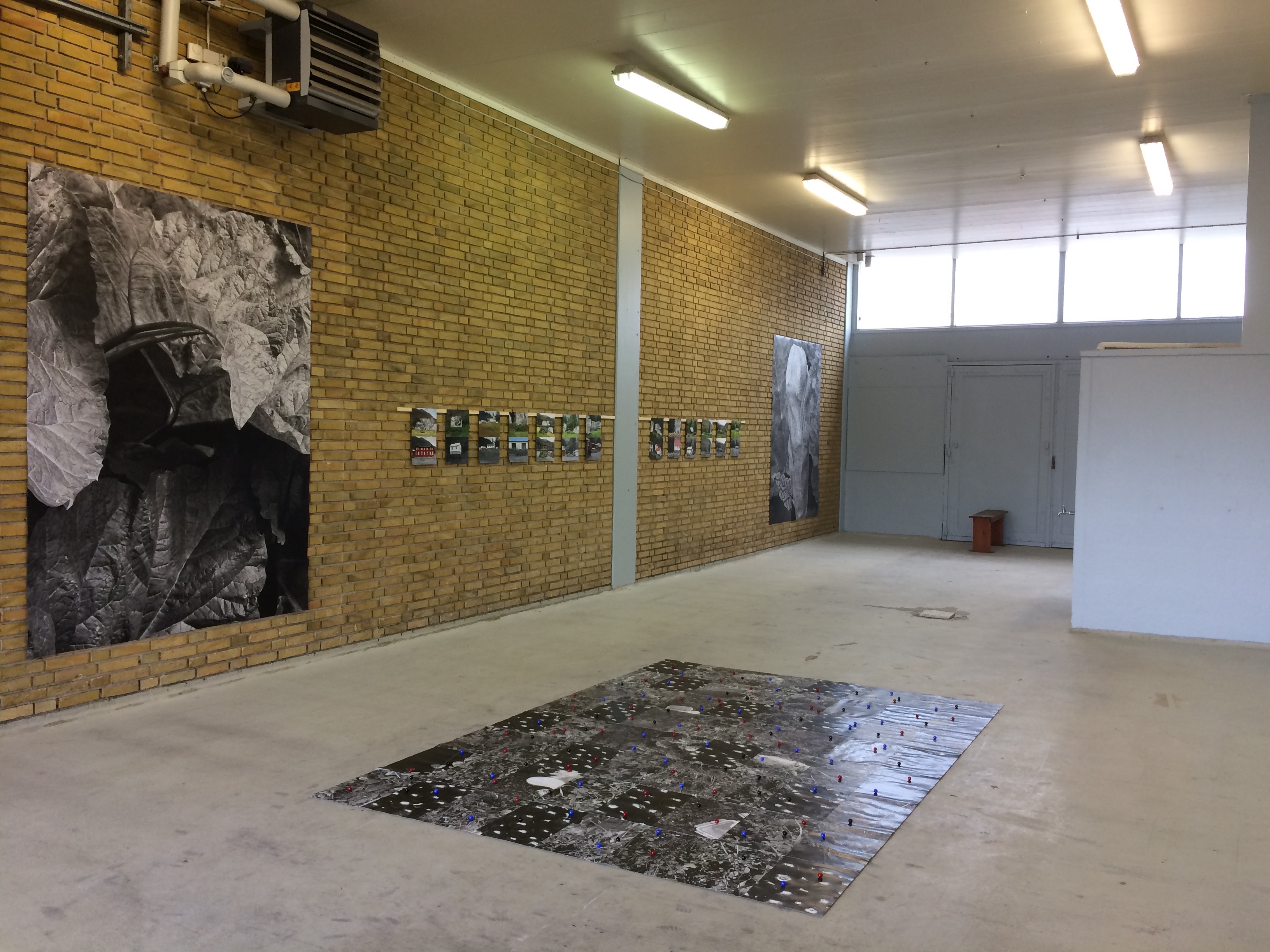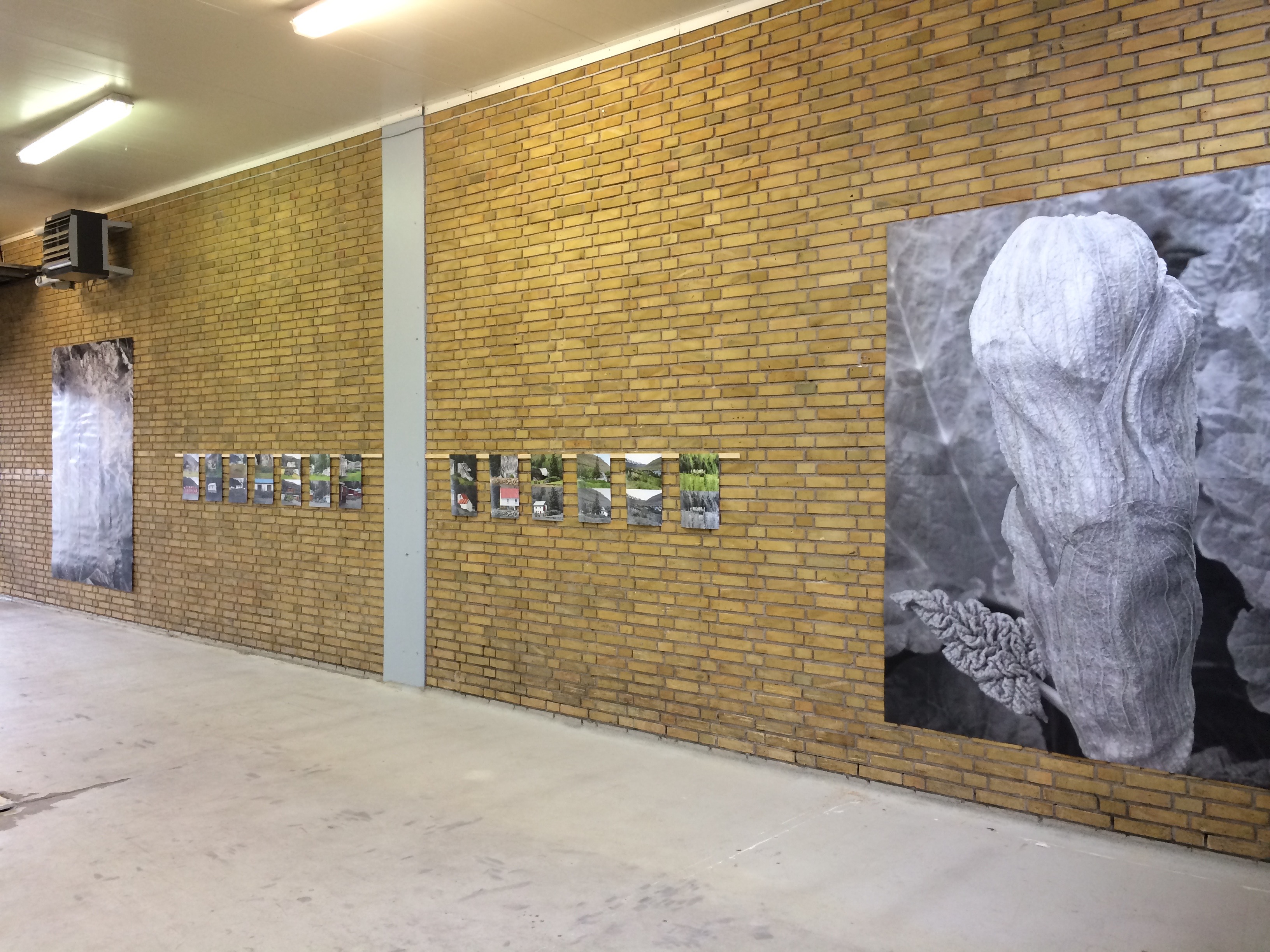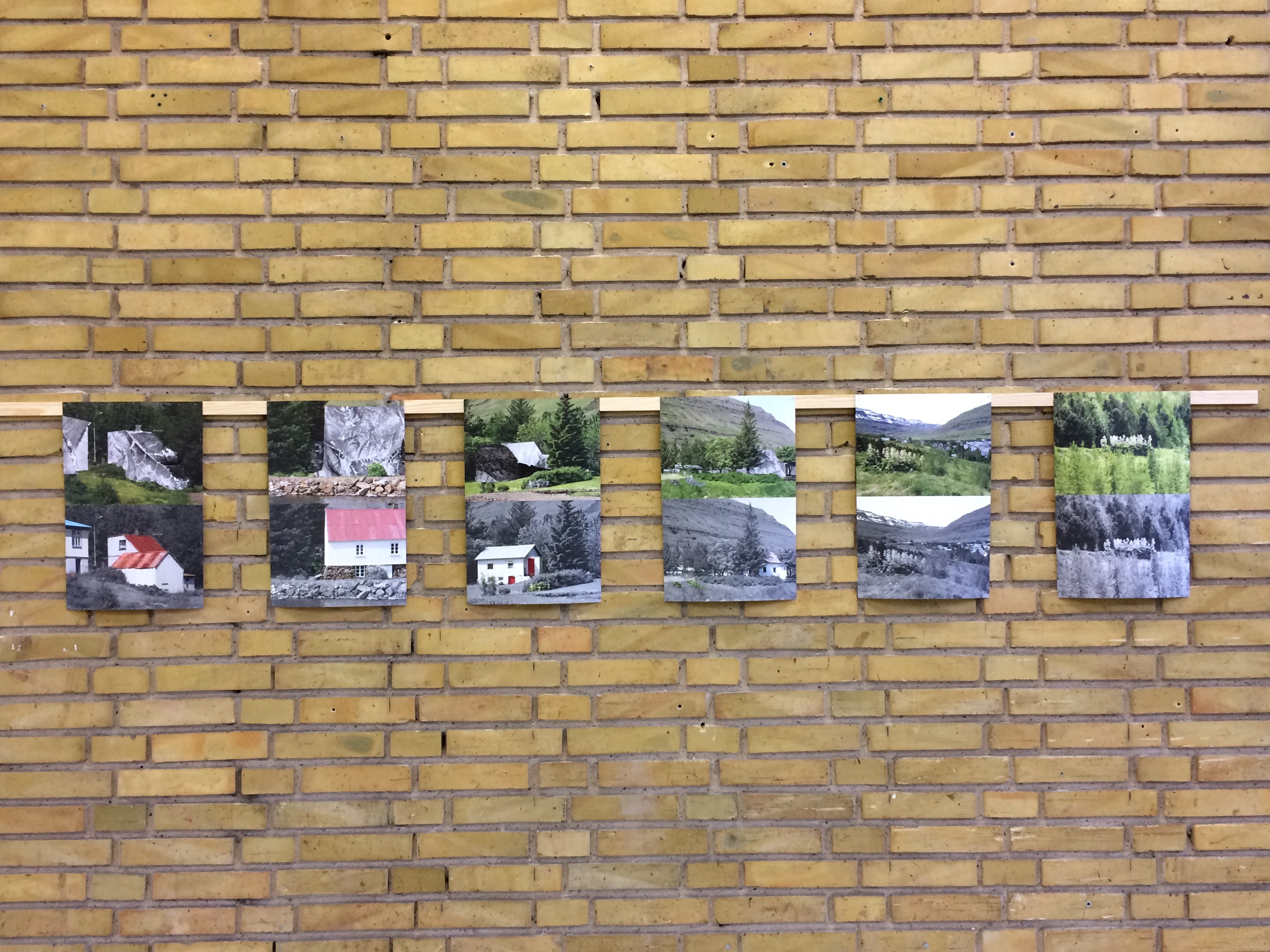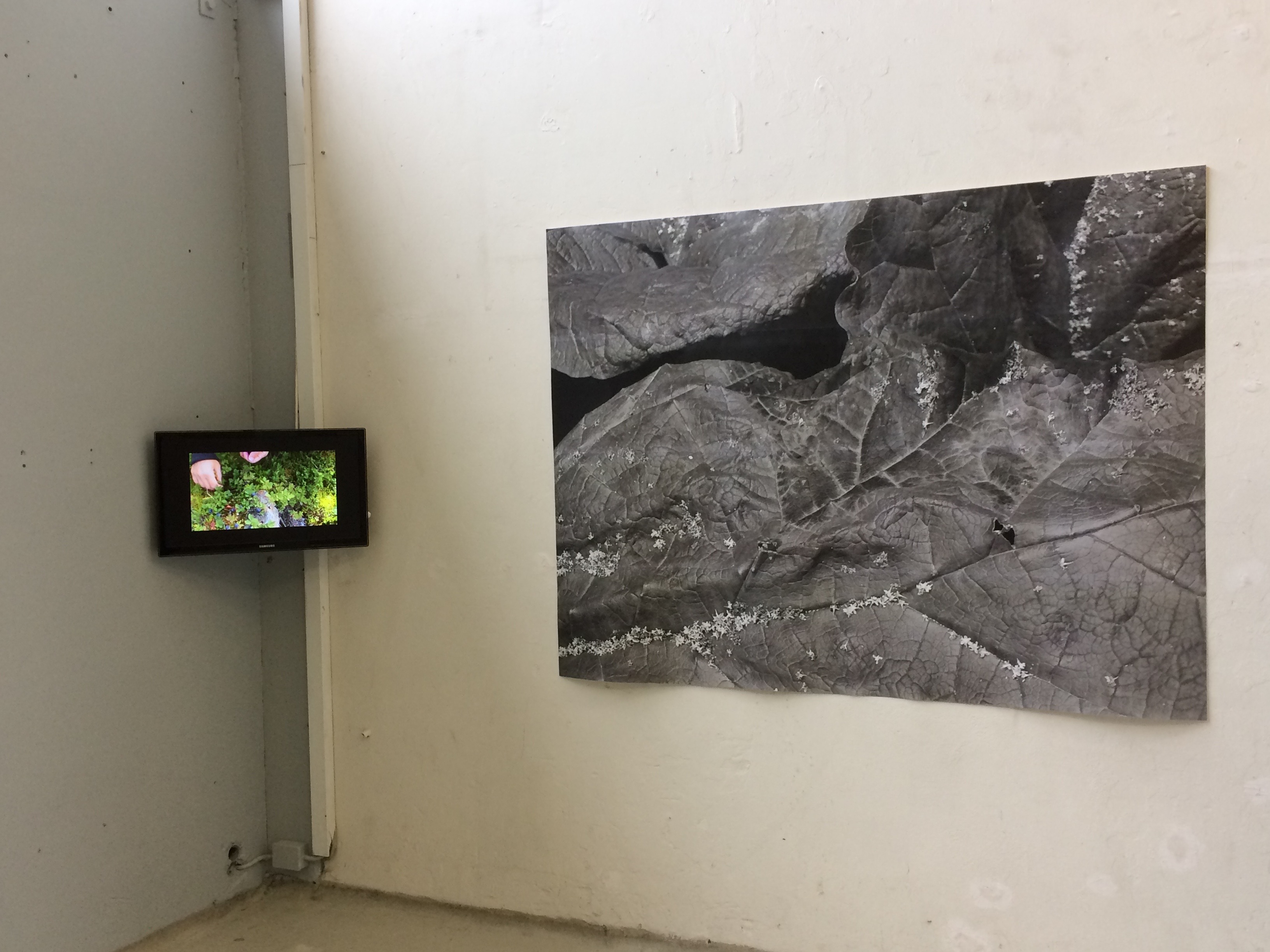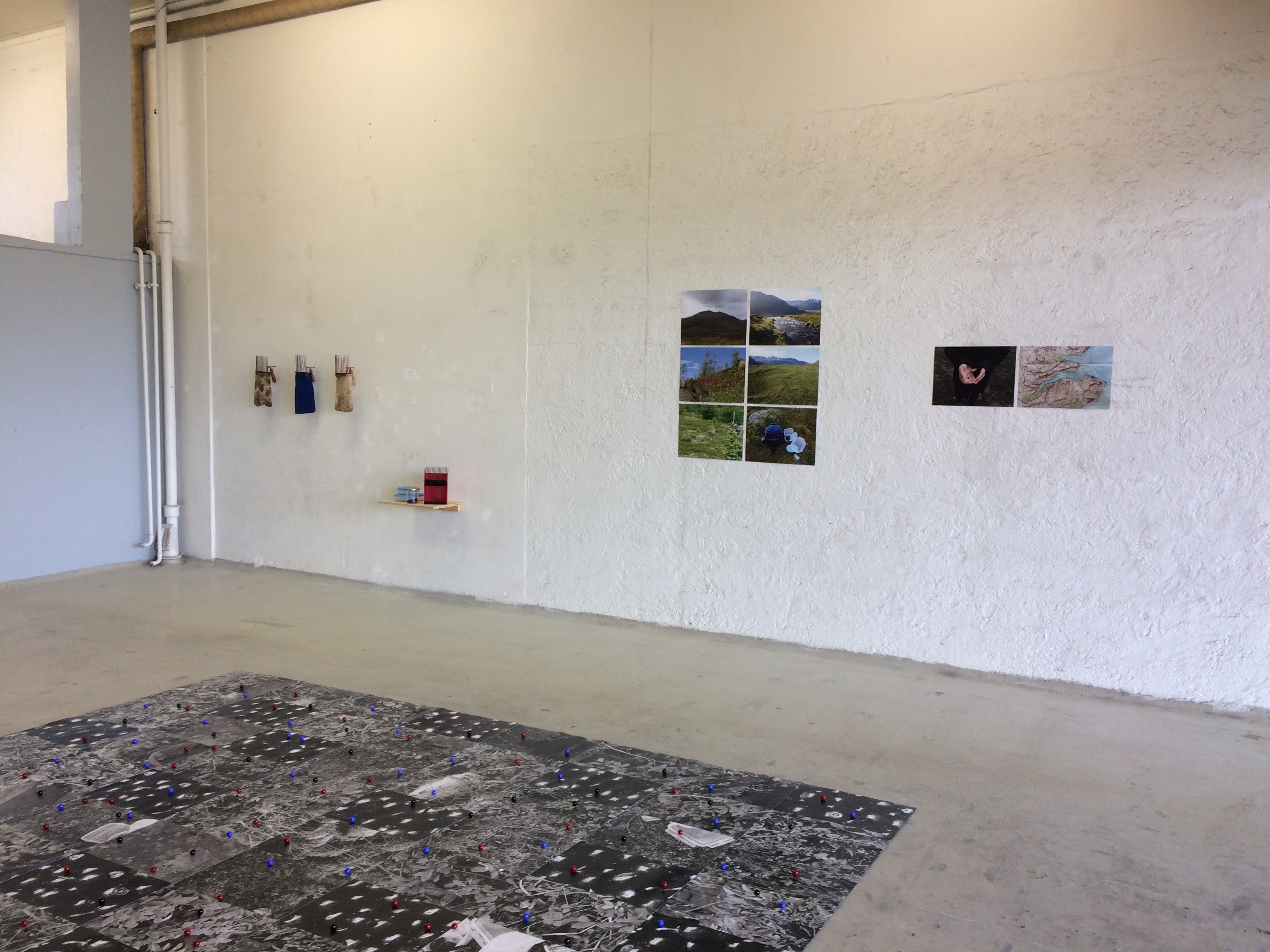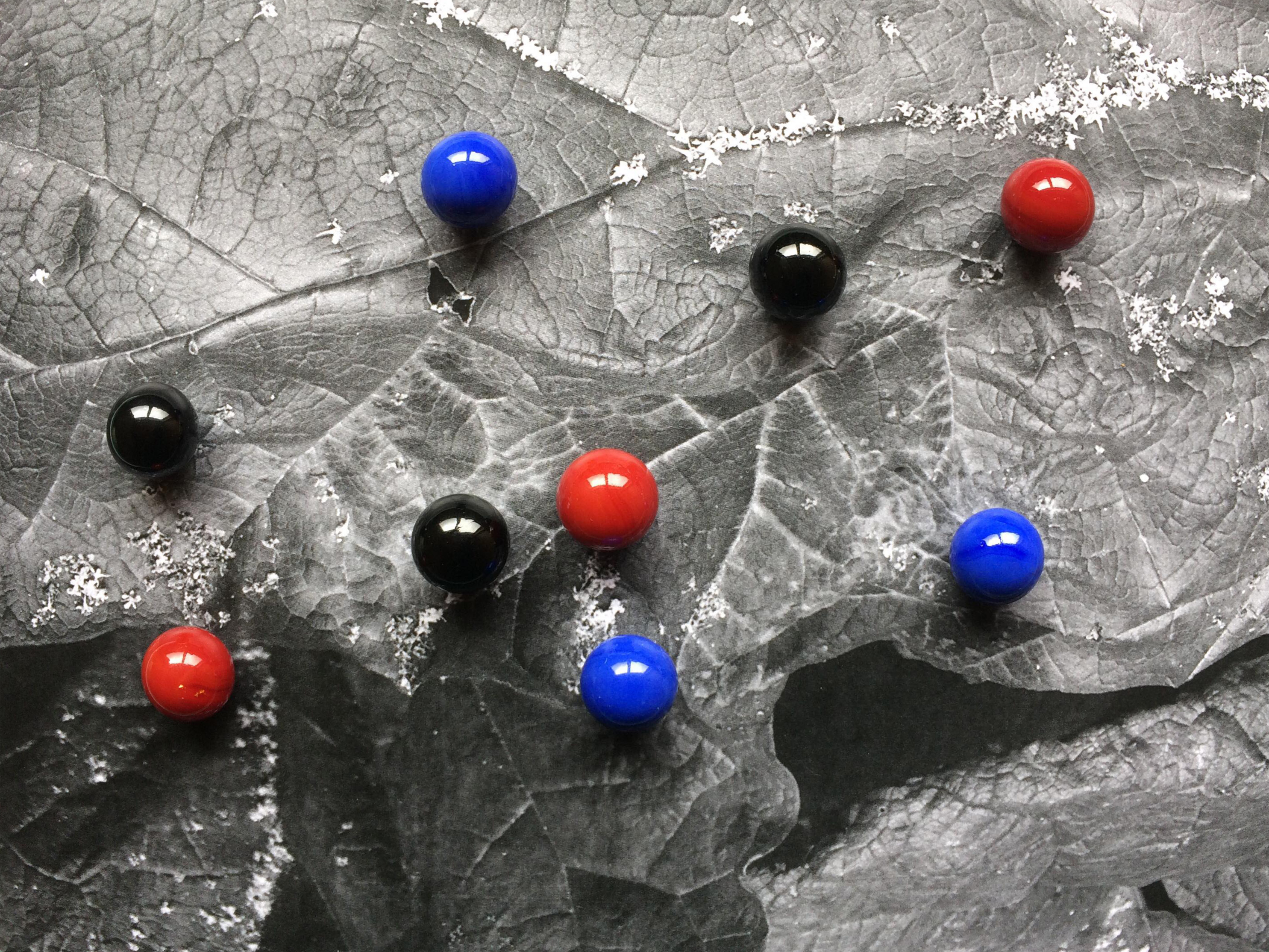Berjamo / Rhubarb Archeology (2018)
Solo exhibition at PIRPA project space, Copenhagen, September 2018
"Berjamo" and "Rhubarb Archeology" are two cycles of new work, specially made for Pirpa project space. They explore seasonal food foraging traditions in the artist's home fjord in East Iceland, and bring them into contrast with the gallery´s context in Gronttorvet.
As a former fruit en gros market, Gronttorvet was part of the global trade infrastructure of industrialized agriculture, which has more or less put an end to the seasonal limitations of fruit availability. In contrast, berjamo, the Icelandic tradition of berry-picking, and the widespread low-key cultivation of rhubarb in rural gardens in Iceland, are both examples for a very seasonal, non-commercial, and sustainable use of local food resources. Dating back to the hard days of subsistence farming, harvesting berries and rhubarb is today a celebration of summer, and part of the way of life in the Icelandic countryside. Here, close to nature and one step removed from nature, for a few weeks each summer the foraging of plants still plays out between a garden and a wild place.
Rhubarb Archeology
The half-wild rhubarb fields that belong to almost every house in rural Iceland appear to be part of their architecture. Sometimes the fields outlast their homesteads: the houses have been abandoned and have disappeared for good, but the rhubarb´s impressive living structures still re-emerge and vanish on their own every summer. Using a sort of rhubarb archaeology, the positions of former farmsteads can be located by their surviving rhubarb fields along the fjord.
In a series of small scale collages, using her own photographs, the artist imagines such a disappearance of human presence in the land, and the vigorous expansion of the then no longer cultivated, beautiful wild rhubarb plants. The series is a work in progress.
Also part of "Rhubarb Archeology" are three large black-and-white photographs showing the architectural and textual beauty of rhubarb on a scale that begins to enter into competition with the industrial architecture of Gronttorvet.
Berjamo
An ancient activity in Iceland and elsewhere, berry-picking has not only helped people to nourish themselves physically, but also spiritually. In the work cycle "Berjamo", the artist observes a sense of immersion in the land and the quiet rhythms of searching and collecting which characterize foraging practices such as berry-picking, and which can evoke an experience of flow. "Berjamo" consists of a large-scale collage installed on the floor, 300 glass marbles, a series of photographs and berry-picking tools, and the two videos "Sorbus vilmorinii" and "August".
"Sorbus Vilmorinii", first made by the artist in 2004, and re-edited for this exhibition,
shows a journey through the labyrinth of a Rowan tree (bot. Sorbus vilmorinii), in which the camera eye moves along unsteadily, searchingly, in one continuous shot. The video plays with the many layers and depths of knowledge and (un)certainty that we discover as observers and participants of nature. The more we look the less we can be sure how much and how clearly we can really see. The music accompanying the video is a composition by John Cage (Eight Whiskus, Works for Violin, 1950). It is borrowed with great respect and not understood as a soundtrack, but as a parallel, independent event. Sometimes, sound and moving image create moments of connection, and sometimes they remain apart.
"August" contrasts the meandering camera movement of Sorbus Vilmorinii with a steady focus. Berry-picking is an organic, but not an arbitrary activity. It has a direction, and is guided by vegetation patterns, the changeable weather, the seasonality of the berry bounty, the accessibility of the land, the distances to be covered on foot. This external structure calls for a certain contextual awareness and placement of the forager, and contributes, together with the careful picking movements, to an experience of flow.
